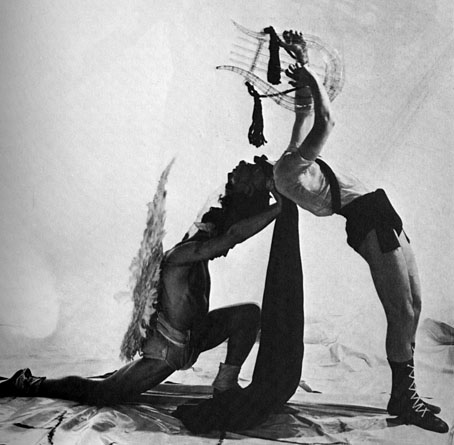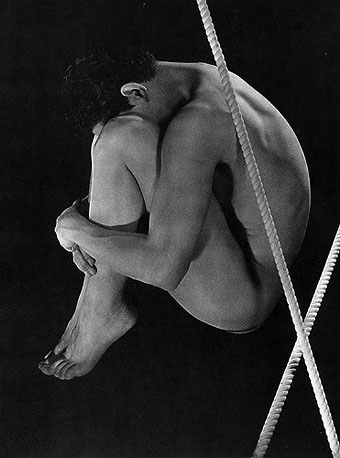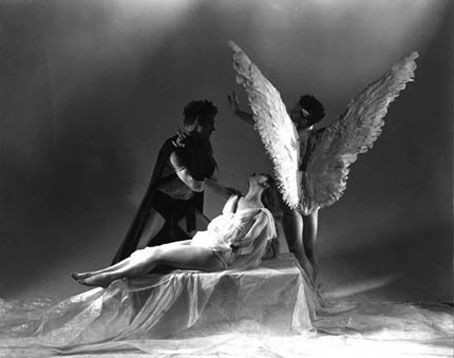The Flandrin pose again, this time in a photograph by George Platt Lynes (1907–1955). This is from a Flickr set of Lynes’ work which was a nice find since many of the web collections are small and tend to repeat the same material.

The picture above isn’t from the Flickr set, it’s a scan from Philip Core’s essential Camp: The Lie that Tells the Truth (1984), and a photograph that long fascinated me for completely unwholesome and inartistic reasons. Core credits it only as depicting dancers from Balanchine’s Icarus but I’d suspected for some time it was a Lynes picture, Lynes having photographed Balanchine’s dancers on several occasions, notably in some nude stagings of Orpheus. The Flickr picture below confirms the Lynes origin although it adds a new layer of mystery by crediting it to Balanchine’s Die Fledermaus. Given the very Classical look of the dancers’ costumes I suspect Core has the correct attribution but the confusion is also an excuse to keep searching.
Elsewhere on { feuilleton }
• The recurrent pose archive
Previously on { feuilleton }
• Philip Core and George Quaintance
• George Platt Lynes



I wonder if this “Fledermaus” photo could have been mislabled…
Whatever the case, great pics!
What bothers me about the quaisi-feotal pose, is, in this case, the rope X. The idea of an overlay anchoring the figure is fine. The choice of the rope may be good, as well, if the implication of the pose is toward a deep depression.
It is not the possible symbology I object to, but the difference in texture, mood and lighting. The X is rather like a cut-out: stuck on
after the fact.
I know this is picky-picky, but, if the desire was to imply morbid thoughts of one’s demise, then the model might have relaxed the grip on his legs. The tension suggests a deliberateness of pose. It is too contrived.
Hey! Nice lighting. Have you ever done a similar shot in super high key?
Hi Erin. If you have any questions for the photographer you’ll need a ouija board since he died in 1955.
Regarding the pose, I have no idea what was intended beyond a general sense of vulnerability which this kind of pose often conveys. Since these are from a Flickr set with few details its hard to say whether the composition is Lynes’ original or if it was cropped for publication somewhere. He did seem interested in dividing the pictorial plane as this picture shows.